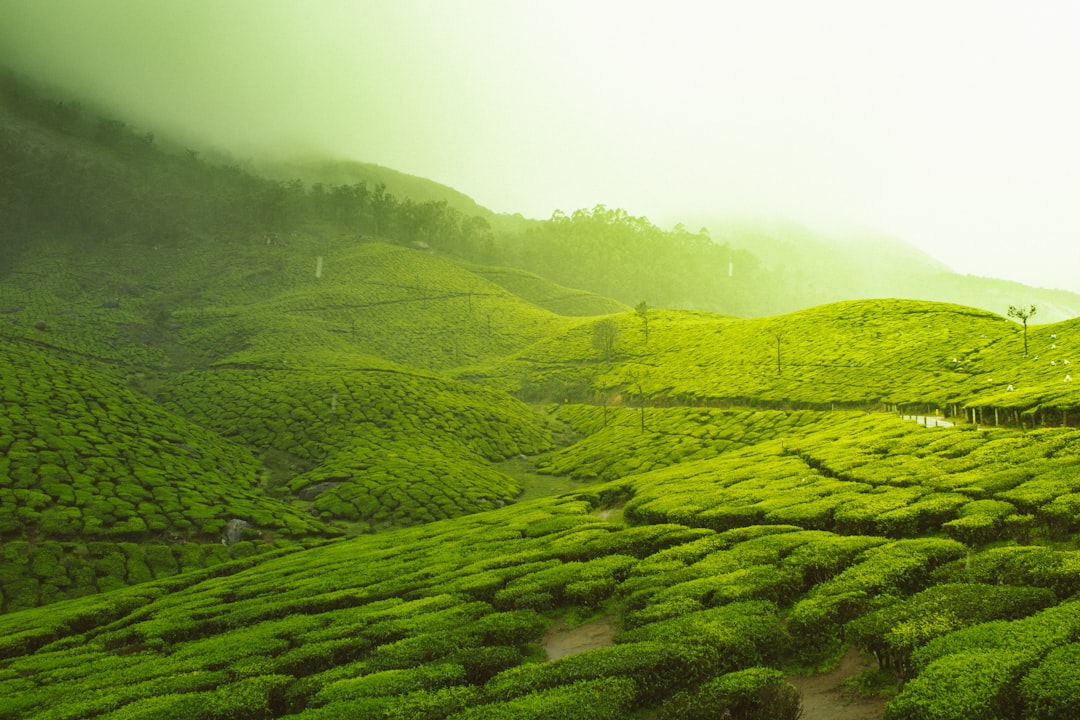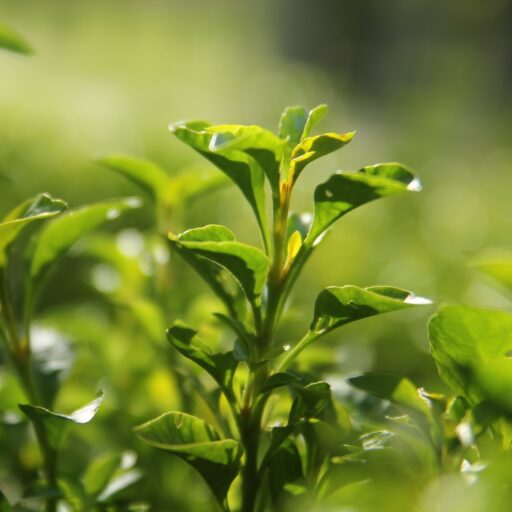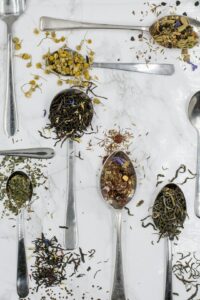Support our educational content for free when you purchase through links on our site. Learn more
Can You Grow Tea in Your Backyard? The Ultimate Guide to Tea Plant Hardiness Zones [2024] 🌱

Have you ever dreamed of sipping a cup of tea freshly brewed from your own garden? Imagine the aroma of freshly picked leaves wafting through the air, the satisfaction of nurturing a plant from seed to cup, and the health benefits of a homegrown brew. While you might think that growing tea plants is a tropical endeavor, you’d be surprised to learn that you can actually cultivate these fascinating shrubs in a wider range of climates than you might think! In this comprehensive guide, we’ll delve into the world of tea plant hardiness zones, explore the ideal conditions for tea plant growth, and empower you to embark on your own tea-growing adventure, no matter where you live.
Quick Answer
Want the TL;DR? Here are the key takeaways:
- Tea plants thrive in USDA Hardiness Zones 7-9, but with some ingenuity, you can grow them in colder zones too!
- Cold Hardy Tea Plant varieties are specifically bred to withstand colder temperatures.
- Container gardening is a great option for colder regions, allowing you to bring your tea plants indoors during the winter months.
- 👉 Shop Tea Plants: Amazon | Walmart | Etsy | Cold Hardy Tea Plant
Table of Contents
- Quick Tips and Facts
- The Journey of Tea: From Ancient Origins to Your Cup
- Tea Plant Hardiness Zones: Where Can You Grow Tea?
- The Thriving Tea Plant: Understanding Its Growth Habits
- Cultivating Your Own Tea Garden: A Step-by-Step Guide
- Nurturing Your Tea Plants: Essential Care Tips
- The Health Benefits of Homegrown Tea: A Sip of Wellness
- Beyond the Basics: Exploring Different Tea Varieties
- Conclusion
- Recommended Links
- FAQ
- Reference Links
Quick Tips and Facts 🍵
Want to dive into the fascinating world of tea cultivation? Want to know if you can grow tea in your backyard? You’ve come to the right place! At Growing Teas™, we’re passionate about helping you transform your garden into a haven of homegrown tea. But first, here are a few quick tips and facts to get you started:
- Best Zones for Tea Plants: What Zones Can You Grow Tea? 2024 🍵 While tea plants thrive in warmer regions (zones 7-9), don’t worry if you live in a colder climate – you can still enjoy the experience of growing tea indoors!
- Sunlight Needs: Just like us, tea plants love to soak up the sun! They thrive in full to partial sunlight. ☀️
- Soil Preferences: Well-drained, slightly acidic soil is the key to happy tea plants. Think of it as providing a cozy bed for their roots to stretch out in. 🌱
- Watering Wisdom: Keep the soil moist but not waterlogged. Nobody likes soggy roots! 💧
- Pruning Power: Regular pruning encourages bushier growth and a bountiful harvest. 🌿
- Health Benefits in Every Cup: Homegrown tea is not only delicious but also packed with antioxidants and other health-boosting compounds. Cheers to that! 🥂
The Journey of Tea: From Ancient Origins to Your Cup 🍵
Tea, the beloved beverage enjoyed by millions worldwide, has a rich and fascinating history dating back thousands of years. Legend has it that tea was discovered in ancient China by Emperor Shen Nong in 2737 BC. According to the story, tea leaves accidentally fell into the emperor’s cup of boiling water, creating a delightful infusion. And thus, a global obsession was born!
From its humble beginnings in China, tea spread throughout Asia and eventually made its way to Europe in the 16th century, quickly captivating taste buds and becoming a staple beverage. Today, tea is enjoyed in countless varieties and blends, each with its unique flavor profile and cultural significance.
Tea Plant Hardiness Zones: Where Can You Grow Tea? 🍵
Now, let’s talk about where you can grow these magical plants. The tea plant, Camellia sinensis, is surprisingly versatile and can be grown in a wider range of climates than you might think.
- USDA Hardiness Zones 7-9: These zones offer the ideal climate for tea plants to thrive outdoors year-round. Think mild winters and warm, humid summers. If you live in the southeastern United States, you’re in luck!
- Colder Zones: Don’t despair if you live in a colder region! You can still experience the joy of growing tea plants in containers and bringing them indoors during the colder months. It’s like giving your tea plants a cozy winter vacation! 🌴
The Thriving Tea Plant: Understanding Its Growth Habits 🍵
Tea plants, belonging to the Camellia family, are evergreen shrubs or small trees that can reach impressive heights in the wild. However, for easy harvesting and garden aesthetics, we recommend maintaining a height of 3-4 feet.
- Sunlight Preferences: Tea plants thrive in full sun to partial shade, ideally receiving at least 4-6 hours of sunlight daily. Think of it as their daily dose of vitamin D! ☀️
- Soil Requirements: Well-drained, slightly acidic soil is crucial for healthy tea plant growth. A soil pH of 6.0-6.5 is ideal. You can amend your soil with acidic potting mix or compost to achieve the perfect balance.
- Watering Needs: Consistent moisture is key, but be careful not to overwater. Water deeply when the top inch of soil feels dry to the touch. Mulching around the base of the plant can help retain moisture and suppress weeds.
Cultivating Your Own Tea Garden: A Step-by-Step Guide 🍵
Ready to embark on your tea-growing adventure? Here’s a step-by-step guide to help you get started:
- Choosing the Right Tea Plant Variety: Tea Plant Varieties Research different tea plant varieties and select one that’s well-suited to your climate and taste preferences. Some popular options include:
- Camellia sinensis var. sinensis: The classic Chinese tea plant, known for its delicate flavor.
- Camellia sinensis var. assamica: Native to Assam, India, this variety produces robust and malty teas.
- Camellia sinensis var. cambodiensis: This variety is prized for its large leaves and unique flavor profile.
- Selecting the Perfect Location: Choose a spot in your garden that receives ample sunlight and has well-drained soil. Consider factors such as wind exposure and proximity to other plants.
- Preparing the Soil: Loosen the soil and amend it with acidic potting mix or compost to create the ideal growing environment for your tea plants.
- Planting Time: The best time to plant tea plants is in the spring or fall, when temperatures are mild and rainfall is plentiful.
- Planting Technique: Dig a hole twice as wide as the root ball of your tea plant. Gently place the plant in the hole, ensuring that the crown is level with the soil surface. Backfill the hole with soil and water deeply.
Nurturing Your Tea Plants: Essential Care Tips 🍵
Congratulations on planting your very own tea garden! Now, let’s ensure your tea plants thrive and reward you with an abundance of flavorful leaves.
- Watering: Water deeply and regularly, especially during dry spells. Aim to keep the soil consistently moist but not waterlogged.
- Fertilizing: Feed your tea plants with a balanced, slow-release fertilizer in the spring and early summer. Avoid fertilizing late in the growing season, as this can encourage new growth that’s susceptible to frost damage.
- Mulching: Apply a layer of organic mulch, such as pine straw or shredded bark, around the base of your tea plants to help retain moisture, suppress weeds, and regulate soil temperature.
- Pruning: Regular pruning helps maintain the shape and size of your tea plants while promoting bushier growth and a more abundant harvest. Prune in late winter or early spring, before new growth emerges.
- Pest and Disease Control: Keep a watchful eye out for any signs of pests or diseases. Early detection and treatment are crucial for preventing widespread problems. You can use insecticidal soap or neem oil to control common pests such as aphids and spider mites.
The Health Benefits of Homegrown Tea: A Sip of Wellness 🍵
Beyond its delightful taste and aroma, tea is renowned for its remarkable health benefits. Green Tea Cultivation is known for its high concentration of antioxidants, particularly catechins, which have been linked to a reduced risk of chronic diseases such as heart disease, cancer, and Alzheimer’s disease.
- Antioxidant Powerhouse: Tea is a rich source of antioxidants, which help protect your cells from damage caused by free radicals.
- Heart Health Booster: Studies have shown that regular tea consumption may help lower blood pressure, reduce cholesterol levels, and improve blood vessel function.
- Brain Support: Tea contains compounds that may enhance cognitive function, improve memory, and protect against age-related cognitive decline.
- Relaxation and Stress Relief: Theanine, an amino acid found in tea, has calming effects on the brain and may help reduce stress and improve sleep quality.
Beyond the Basics: Exploring Different Tea Varieties 🍵
Ready to expand your tea horizons? The world of tea is vast and diverse, offering a captivating array of flavors and aromas to explore. From the delicate sweetness of white tea to the robust earthiness of black tea, there’s a tea out there for every palate and occasion.
- White Tea: Made from the youngest, most delicate tea leaves, white tea is known for its subtle sweetness, floral aroma, and pale golden hue. Herbal Tea Planting can be a great addition to your tea garden.
- Green Tea: Green tea is prized for its fresh, vegetal flavor, vibrant green color, and numerous health benefits. It’s made from tea leaves that have undergone minimal oxidation, preserving their natural antioxidants.
- Black Tea: Black tea undergoes full oxidation, resulting in its characteristic dark brown color, robust flavor, and energizing properties. Popular black tea varieties include English Breakfast, Earl Grey, and Darjeeling.
- Oolong Tea: Oolong tea falls between green and black tea in terms of oxidation, resulting in a wide range of flavor profiles, from floral and fruity to toasty and nutty.
- Pu-erh Tea: Pu-erh tea is a unique type of fermented tea that’s prized for its earthy, complex flavor and digestive benefits. It’s often aged for years or even decades, developing a richer flavor over time.
Conclusion 🍵

So there you have it! Growing your own tea is a rewarding and enriching experience, offering a taste of tranquility and a sip of wellness. Whether you’re a seasoned gardener or a curious beginner, cultivating tea plants can be a fulfilling journey. Remember, patience is key – tea plants take time to mature and produce their finest leaves. But with the right care and attention, you’ll be enjoying the fruits of your labor in no time!
Recommended Links 🍵
👉 Shop Tea Plants:
- Camellia Sinensis: Amazon | Walmart
- Cold Hardy Tea Plant: Amazon | Walmart
- Tea Plant Starter Kit: Amazon | Walmart
Books for Tea Growers:
- The Tea Lover’s Guide to Growing Your Own Tea: Amazon
- Tea: The Complete Guide to Growing, Making, and Enjoying Tea: Amazon
FAQ 🍵

Can you grow tea plants in the US?
Yes, absolutely! While tea plants are native to Asia, they can be successfully grown in many regions of the United States. The USDA Hardiness Zones 7-9 are particularly suitable for outdoor cultivation, but you can also grow tea plants in containers and bring them indoors during colder months.
Where are tea plants grown in the US?
Commercial tea plantations are primarily located in the southeastern United States, particularly in South Carolina. Smaller-scale tea farms are also found in states like Alabama, Hawaii, Oregon, and Washington.
Read more about “Can you grow tea plants in the US?”
How cold can tea plants tolerate?
Tea plants are generally considered to be frost-tender and can be damaged by temperatures below freezing. However, some varieties, such as the “Cold Hardy Tea Plant”, are more tolerant of cold weather. For colder climates, container growing and bringing the plants indoors during the winter months are recommended.
Read more about “How cold can tea plants tolerate?”
Can I grow tea plants in zone 7?
Yes, you can! USDA Hardiness Zone 7 is generally suitable for growing tea plants outdoors. However, it’s essential to select a variety that’s well-suited to your specific microclimate and provide adequate protection during cold snaps.
Read more about “Tea Plant Hardiness Zone: Cold Hardy and Easy to Grow … ❄️🌱”
Where does the tea plant grow best?
Tea plants thrive in warm, humid climates with mild winters. They prefer well-drained, slightly acidic soil and ample sunlight. The ideal USDA Hardiness Zones for outdoor cultivation are 7-9.
Read more about “Which Country Grows the Best Tea in the World 2024? 🌍☕”
Reference Links 🍵
- Camellia sinensis: Camellia sinensis
- Cold Hardy Tea Plant: Cold Hardy Tea Plant
- Tea Production in the United States – Wikipedia: Tea Production in the United States
- USDA Plant Hardiness Zone Map: USDA Plant Hardiness Zone Map
- Growing Teas™: Growing Teas™



